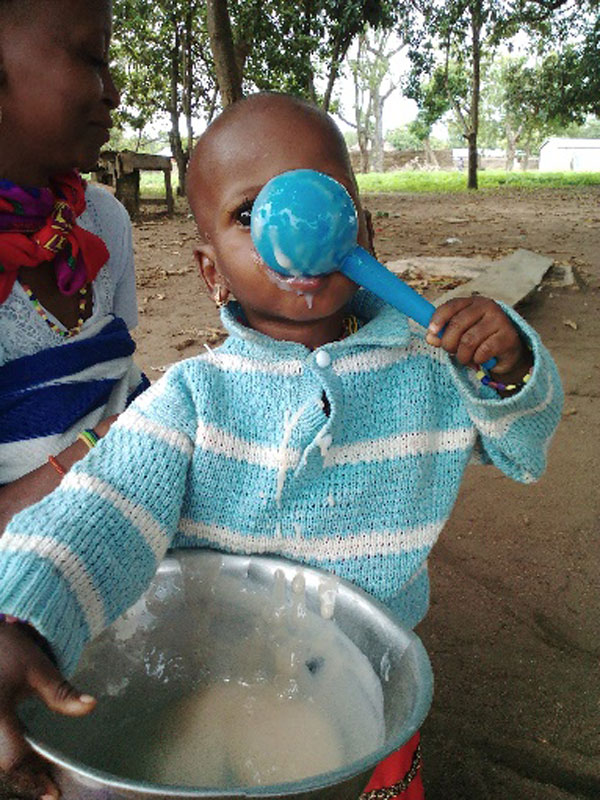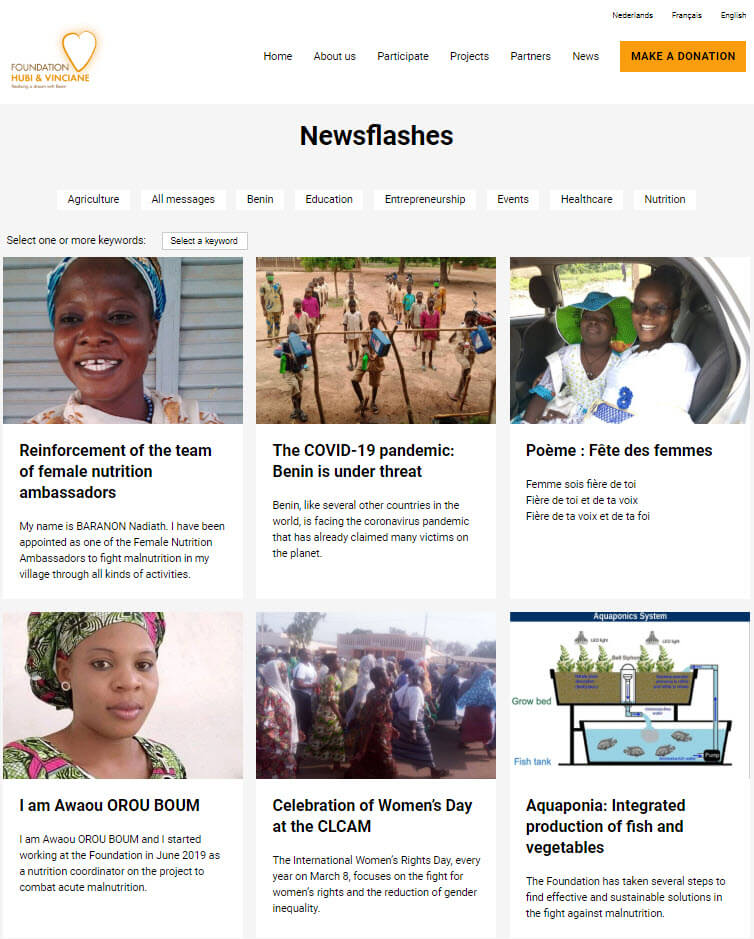Screening for acute malnutrition in children aged 0.5 to 5 years old
The Hubi & Vinciane Foundation periodically organizes active screening campaigns for acute malnutrition in its intervention villages. This organization is part of its approach to fight against malnutrition in mother-child couples and to assess the nutritional status of the different targets, in particular children under 5 years old.
To this end, it has deployed facilitators in the communities to screen all children aged 0.5 to 5 years through the door-to-door strategy. This screening consists of taking anthropometric measurements (weight and height) of all children in the indicated age range. The anthropometric parameters taken are recorded on a z-score table to evaluate the nutritional status of the children screened.


In the year 2020, nearly 12,000 children aged 0.5 to 5 years were screened in 53 villages. Of the 12,000 children screened, more than 1,400 were diagnosed as acutely malnourished.
Acutely malnourished children are classified according to the severity of their condition. Thus, three categories of malnourished children are identified: moderate cases, severe cases without complications and severe cases with complications. This distribution constitutes the guideline for the orientation of management.
Severe forms of acute malnutrition are dealt with by the health system. The moderate forms, which are the most numerous, are less subject to a health emergency, which increases the permanent risk of complications. Faced with this, the Foundation has taken the option of early treatment of acute malnutrition.
Thus, all acute and moderate malnourished children detected are systematically taken care of through Nutritional Recovery Learning Centres (FARNs). In these homes, moderately acutely malnourished children receive nutritional treatment based on enriched flours (PREMIX) for 15 days.


During this period, 5 nutrition education and cooking demonstration sessions are organized for mothers of sick children and other household participants to build their capacity on the different ways to fight malnutrition. Weight monitoring of malnourished children under treatment is also carried out during these sessions to assess the nutritional status of the children.

